April was a beautiful month for visiting Nashville and the Tennessee State Library and Archives (TSLA). It is always exciting for me to have the opportunity to tour an archives.
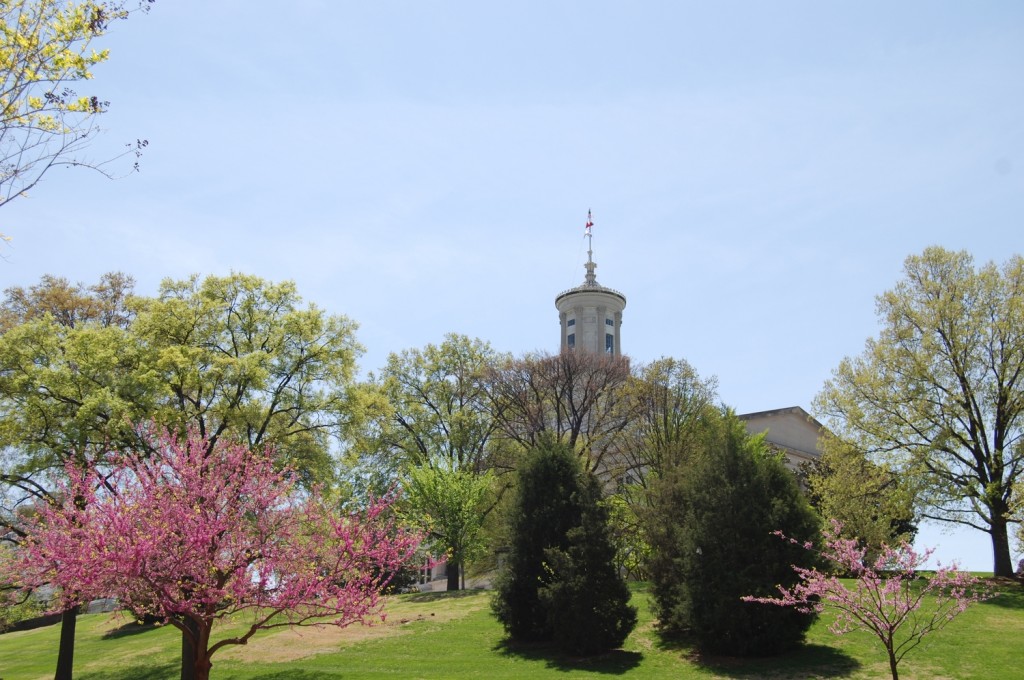
My friend Gordon Belt, Director of Public Services for TSLA, offered to give me a tour of the patron areas and then surprised me at the end by taking me to a few behind-the-scenes areas. Although my photographs barely do my visit justice and my brain was overwhelmed by just how many resources patrons have at their disposal in the library, I do hope you will enjoy TSLA through my lens.
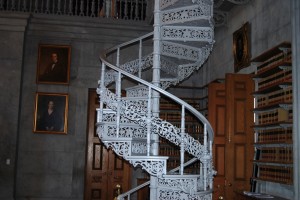
Once upon a time, the library and archives was located within the capitol. As you can imagine, its holdings quickly outgrew the space and now this room serves as the legislative lounge.
The public floor of the library and archives is divided into four areas: Lobby, Legislative History, Microfilm Room, and the South Reading Room.
LOBBY
The lobby boasts exhibit space and a still-active card catalog referencing Revolutionary War Veterans, land grants, court cases, tax lists, etc. The lobby’s patron computers support online databases and the collection catalog.

The TSLA patron computers provide access to numerous research databases such as Ancestry.com and Fold3 via its institutional memberships, as well as to a digital catalog of its own extensive collections.

Once a digital index is provided for a collection, its card system is removed, but for now, the catalog is still a great resource for researching many TSLA collections..

Not surprisingly, Gordon was quickly able to show me an entry for John Sevier. Pretty sure he has read everything in the library there is about the man!
LEGISLATIVE HISTORY ROOM
This room houses a recording of every session conducted on capitol hill in one format or another. There is a listening station for the audio files and shelf after shelf of house and senate journals.
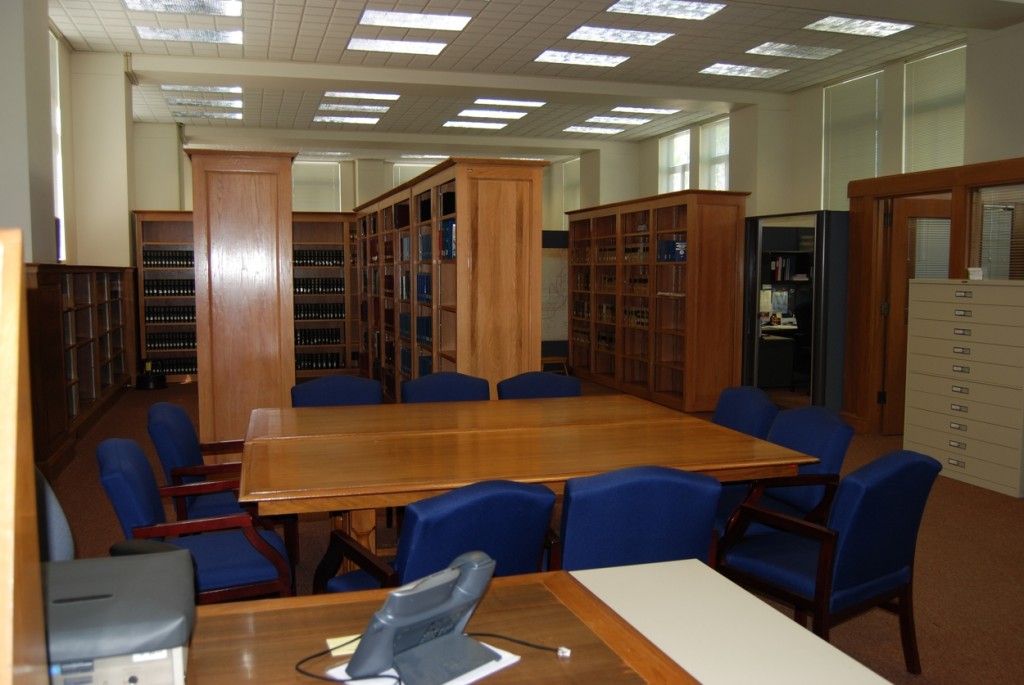
The very idea of this room is intimidating, but there are a couple of very knowledgeable TSLA staff members on hand to help. The digitization staff have their offices behind the back glass wall.
MICROFILM ROOM
This room is evidence of TSLA’s mandate to actively collect the history of the state and its counties. Among the different collections are microfilmed county records (some of the counties don’t exist anymore), old newspapers, and census rolls. This area also offers multiple kinds of microfilm reader stations, printers, a patron break room, and a large reference library of family histories and neighboring state histories.
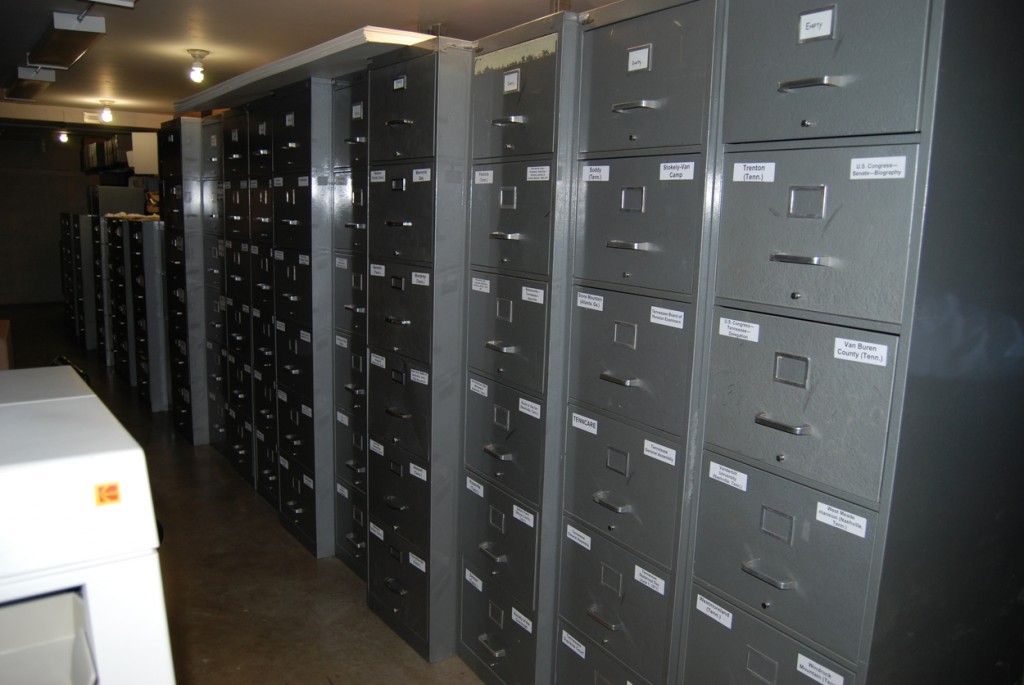
County records on film. Many counties do not have the resources to microfilm their own records. This resource, like many of the collections at TSLA, prevents patrons from having to travel from county to county while researching.
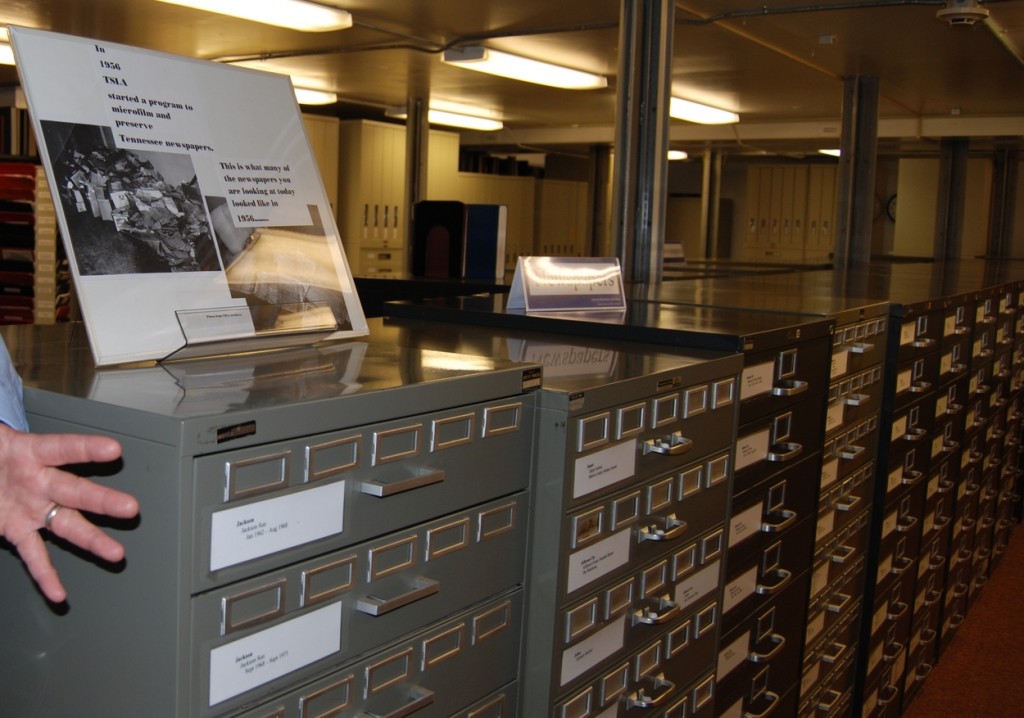
The TSLA has been microfilming old newspapers since 1956. Many are no longer in circulation and are in terrible condition upon donation.
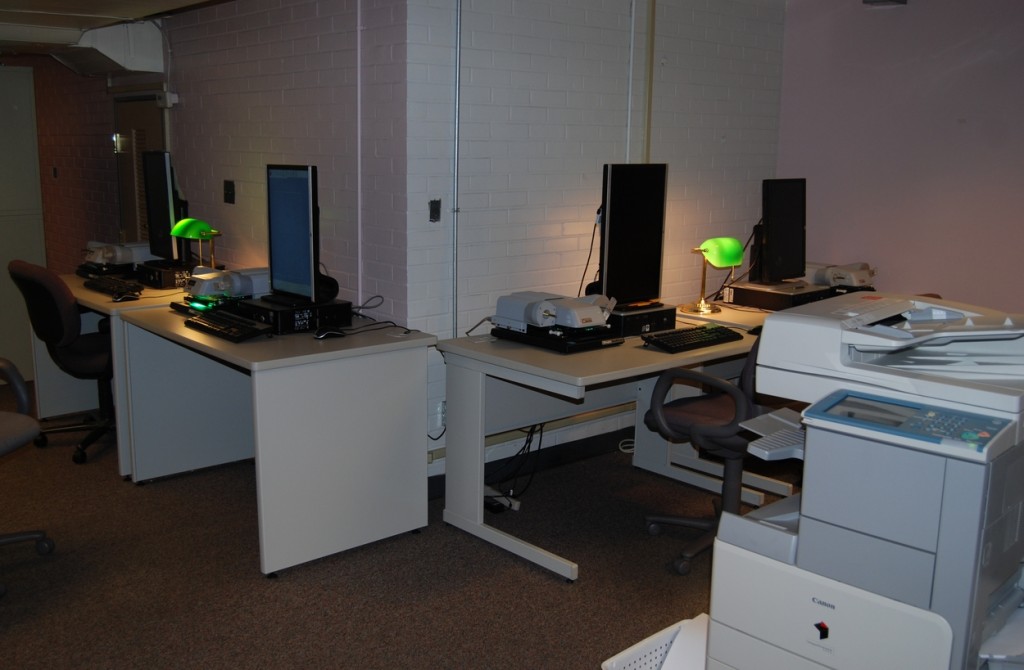
A small portion of the microfilm readers available, ranging from the old hand crank variety to high tech digital readers.
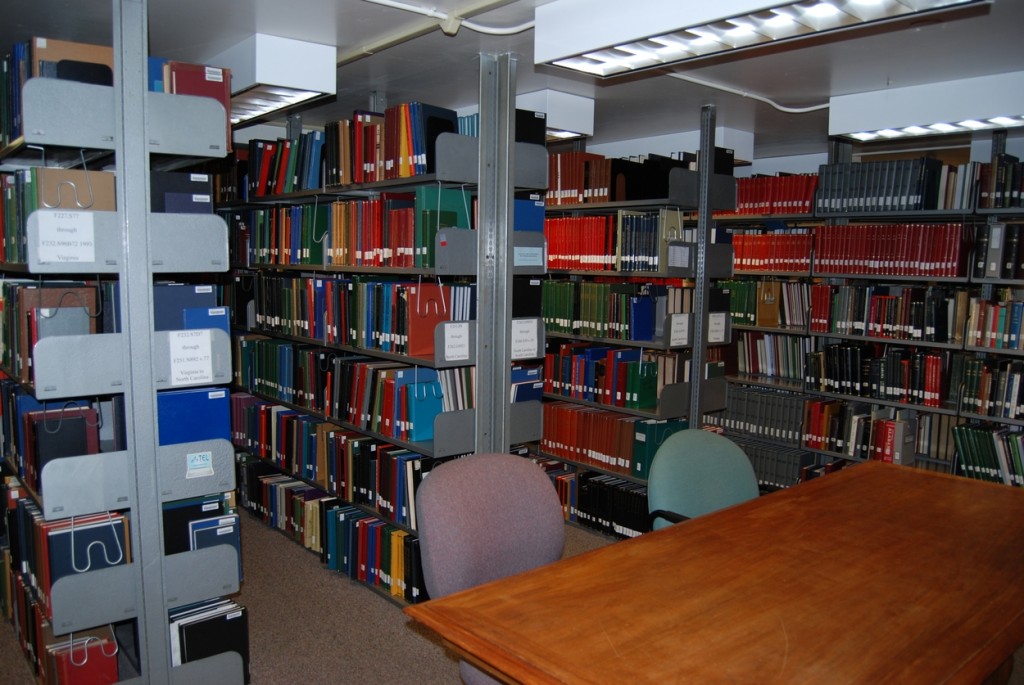
The reference library has an impressive collection of donated family histories and state and local histories from all eight neighboring states.
SOUTH READING ROOM
This room is where patrons can read manuscripts in the closed reading area, access a vast collection of city directories, read county histories, census indexes, and review maps and history materials relating to the three grand divisions.

The amazing Zeta Book Scanner. You can scan the book face up, thereby protecting the spine from the pressure of flattening the open book onto the glass bed. There is a scan button built into the bed so you don’t have to let go of the book. You really have to see one of these in person.
BEHIND THE SCENES: CONSERVATION LAB
Some documents are so old, fragile, or have been so poorly stored that conservation work must be performed on them before they can ever hope to be handled by a patron or even microfilmed. Other books and manuscripts are so pertinent to the state’s history that they require regular maintenance.
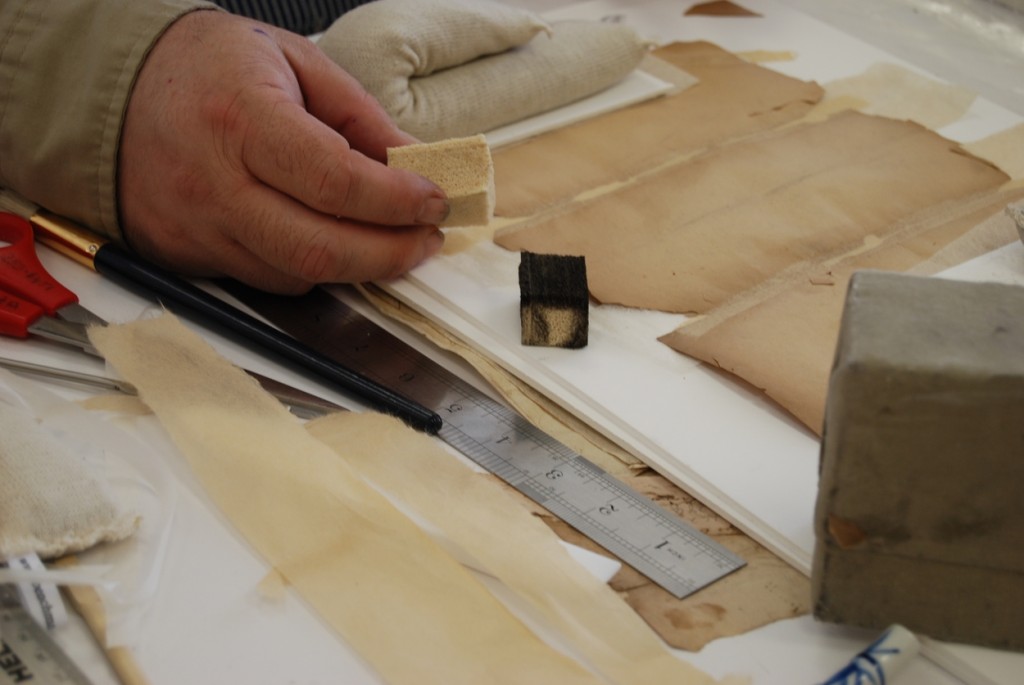
A conservator removing dirt from a document. Notice that one cleaning sponge is already very black with dirt.
MICROFILM PRODUCTION
I only took one picture in this office. Have you ever thought about where microfilm comes from? How do they all get to be different lengths and on differently sized spools? I never knew the answer to these and other questions until Gordon showed me this little studio office.
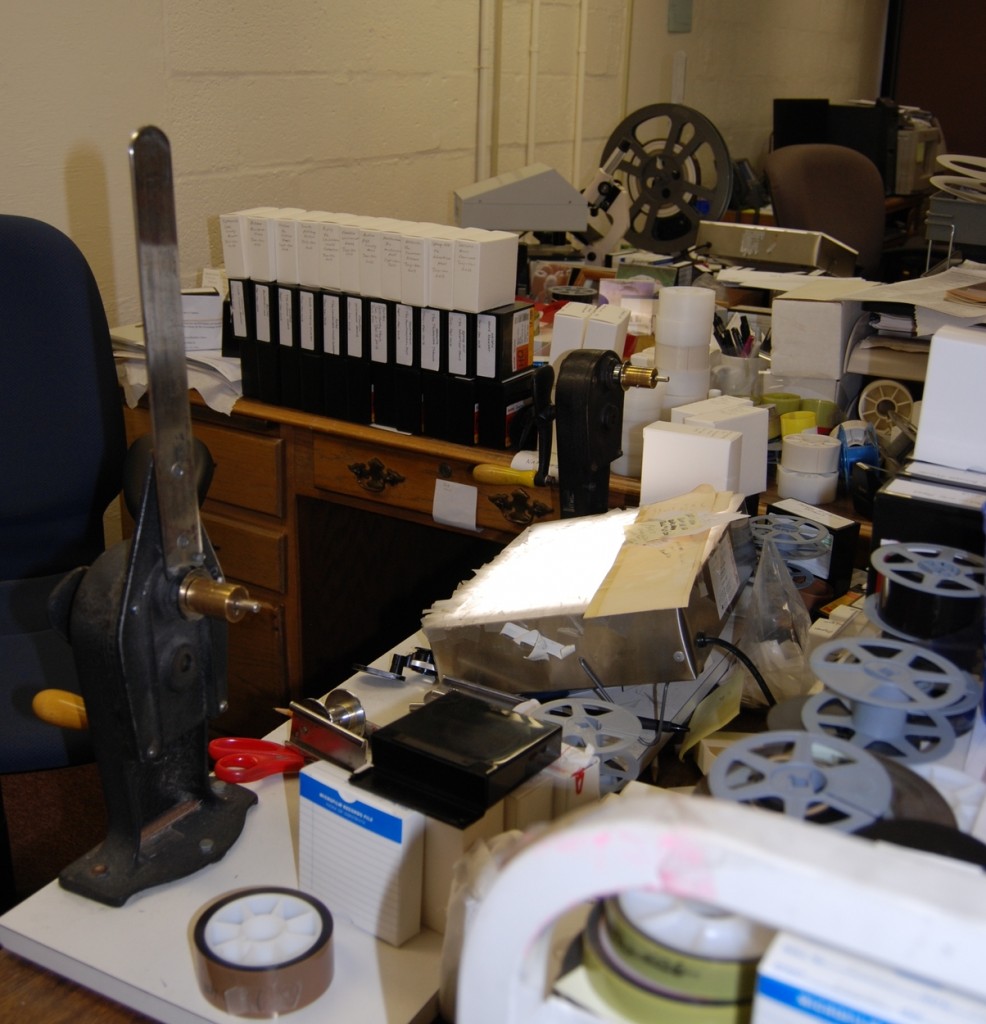
Microfilm comes on a giant reel that looks like movie film. It gets split and crafted into individual rolls perfect for each record.
LIBRARY AND ARCHIVAL STORAGE
The TSLA is comprised of 8 split-level floors. I only viewed the storage on one floor. There are many, many more books and grey boxes on other floors.
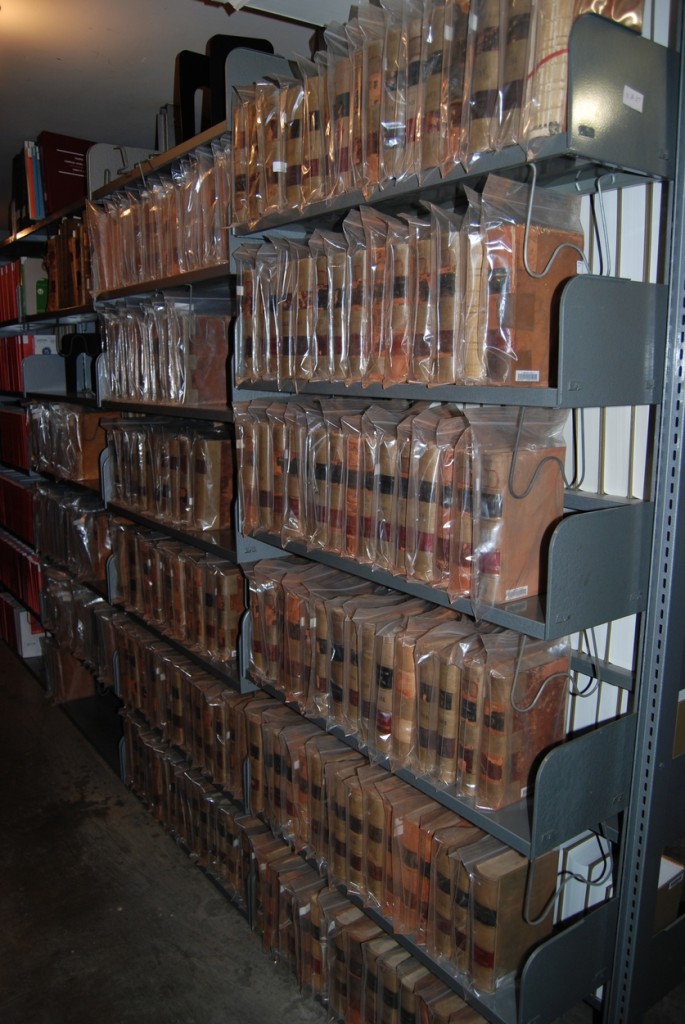
Some books are so delicate they cannot be removed from the shelves by the spine or text block. They are housed in covers for dust protection and safe handling.
CLASSROOM
The TSLA offers numerous classes and workshops on history and genealogical research and on caring for your own family history materials.
MY TOUR GUIDE
I met Gordon Belt at the first conference of the Society of Tennessee Archivists I ever attended. He was the vice-president that year and the conference was his baby. We talked a little about my research interests and my upcoming practicum in Salt Lake City that summer. You are reading this blog because when I returned from my practicum, Gordon (GB, as I call him) encouraged me to keep writing. He has been a generous supporter and mentor. He has just authored his second book, John Sevier: Tennessee’s First Hero.
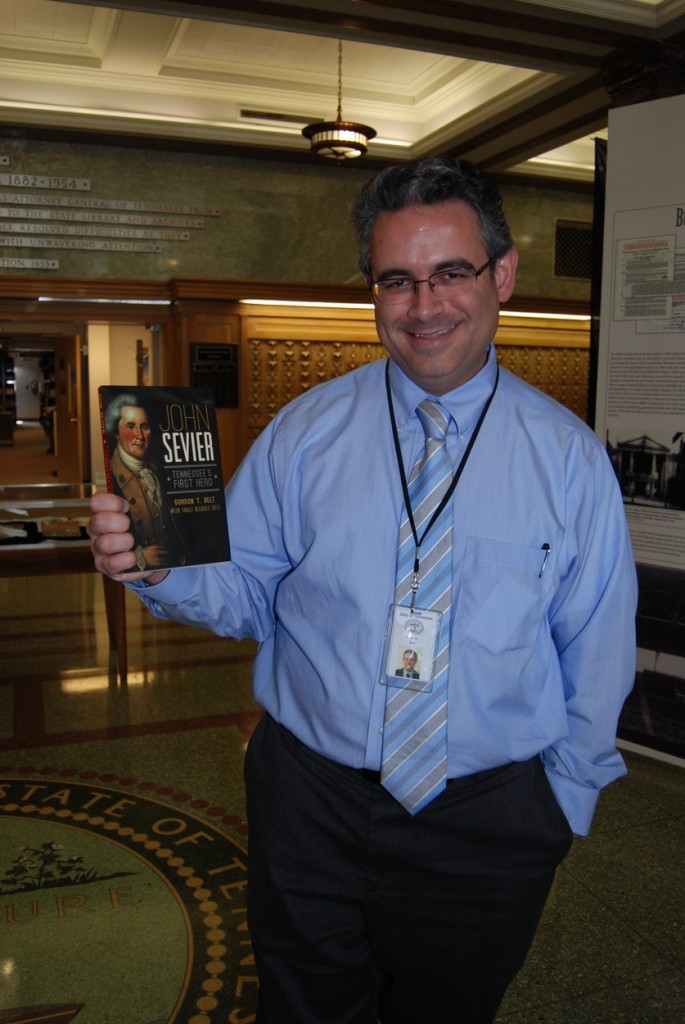
“I could not have written this book without the resources of the Tennessee State Library and Archives.” -Gordon Belt
Thanks, Gordon. You are the best!
I hope readers will find the TSLA as interesting and worth visiting as I have. I promise that if you peruse their holdings via their website and e-mail or call in advance, the staff there will dedicate themselves to making sure your research is fruitful. In the meantime, you might enjoy becoming a regular reader of the TSLA blog.

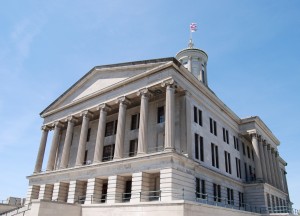

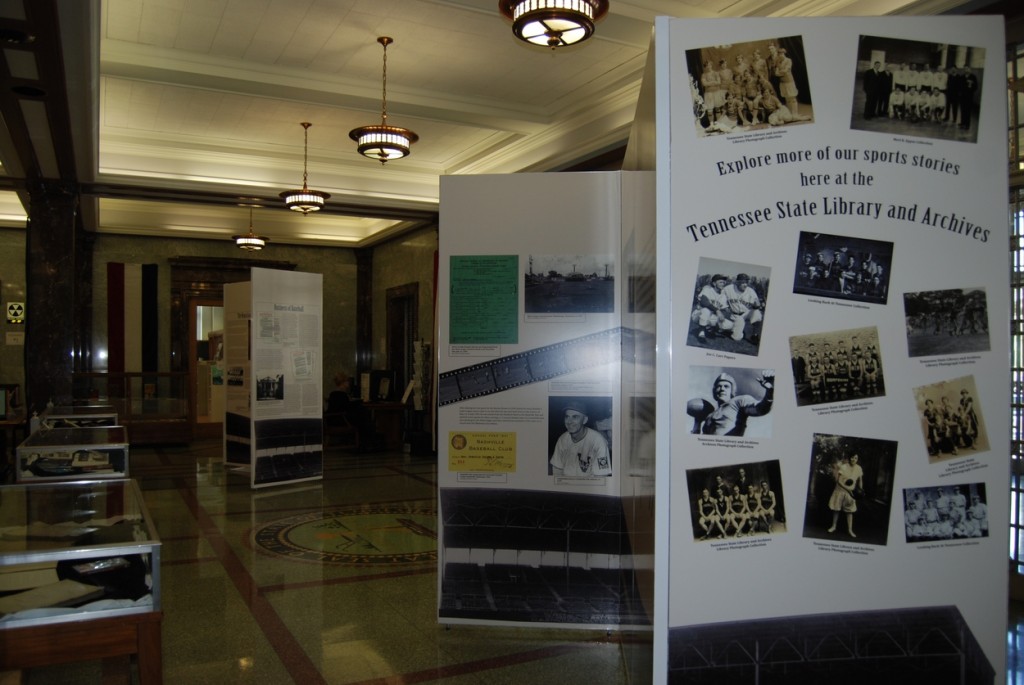
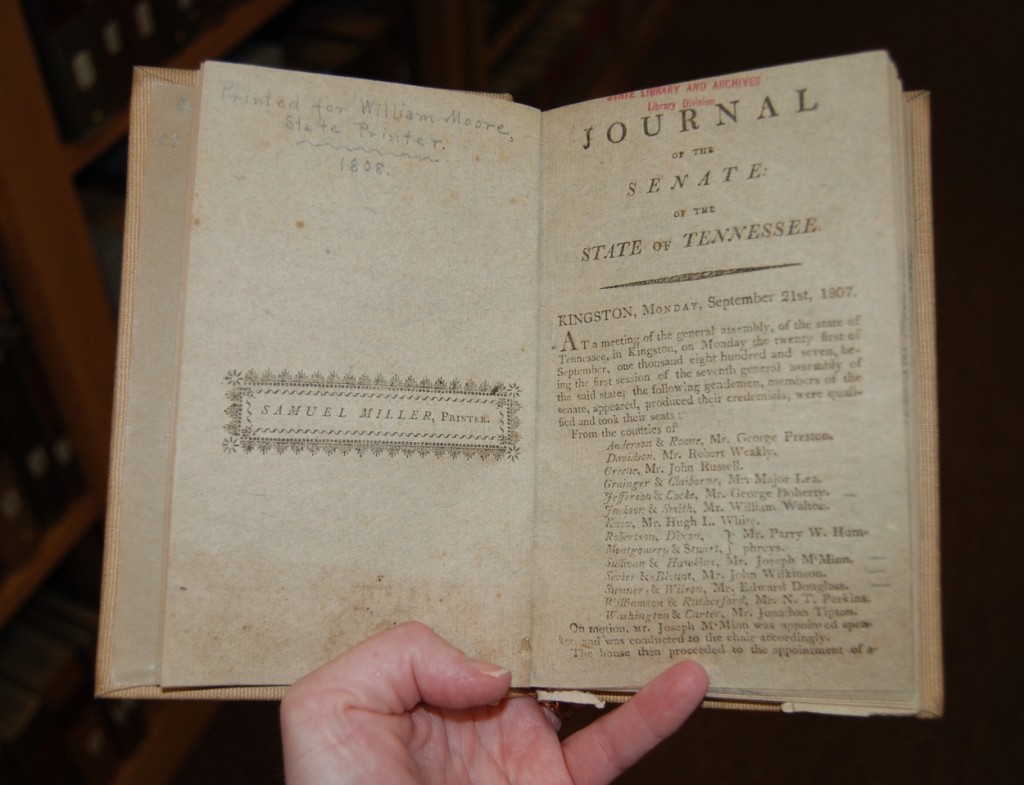

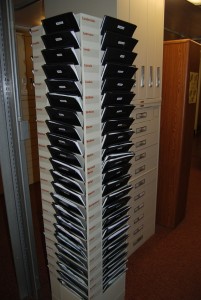
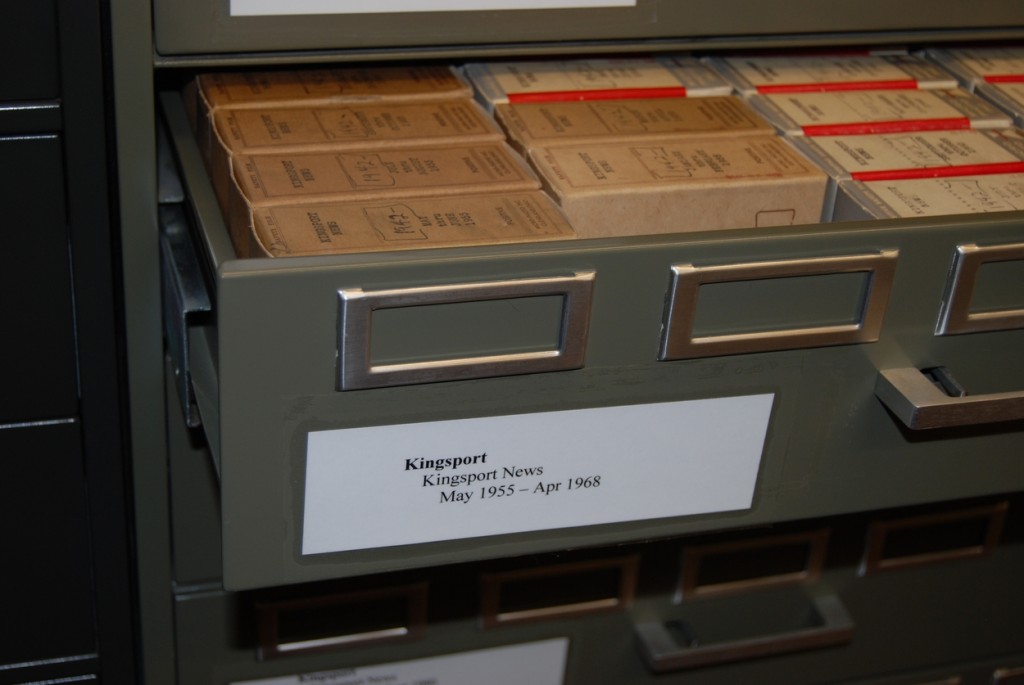
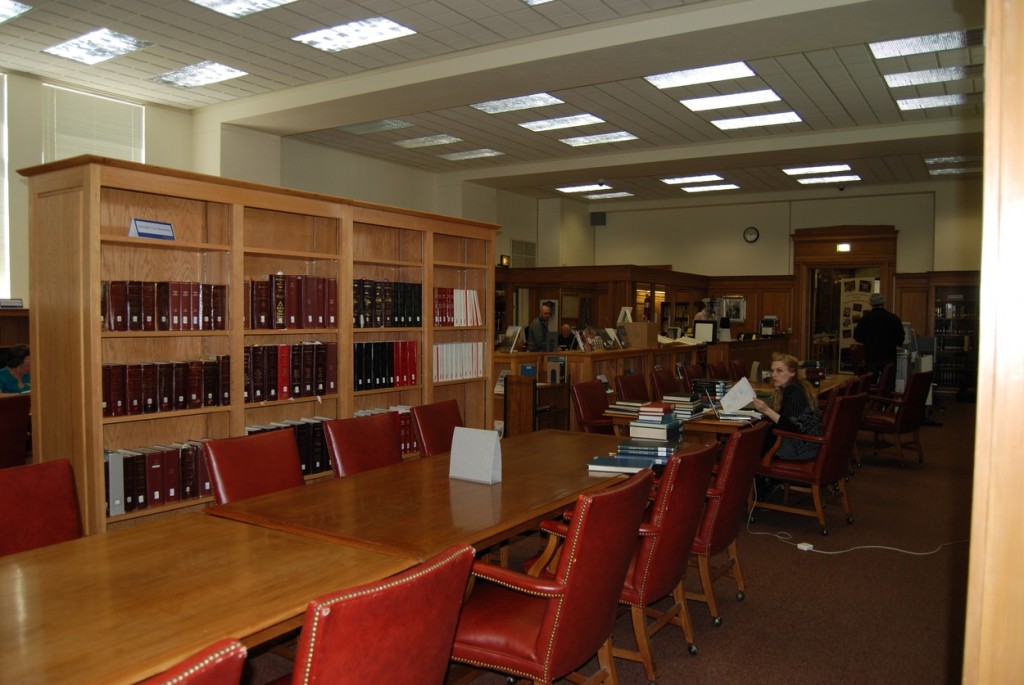

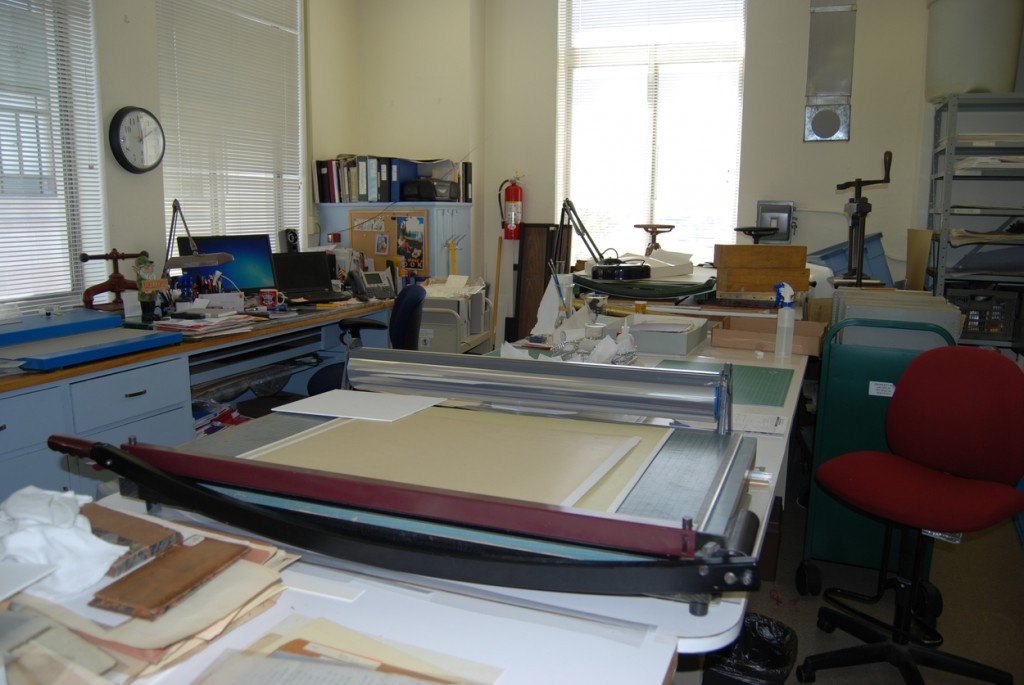
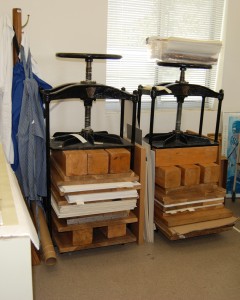
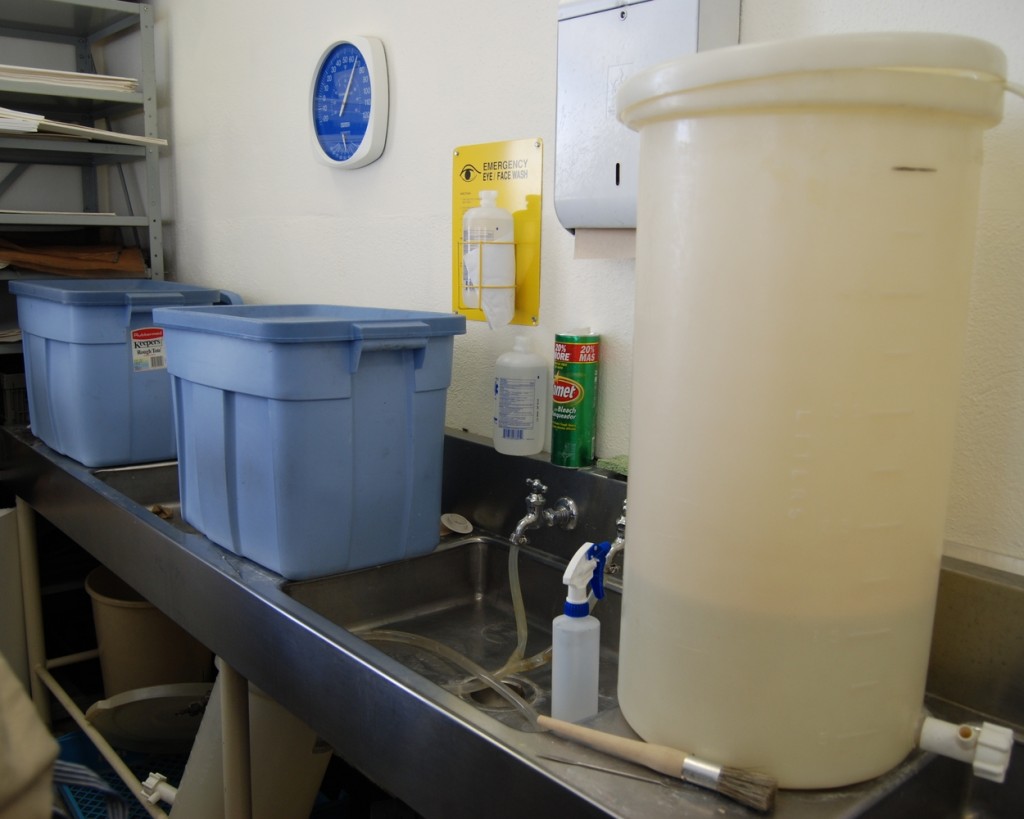
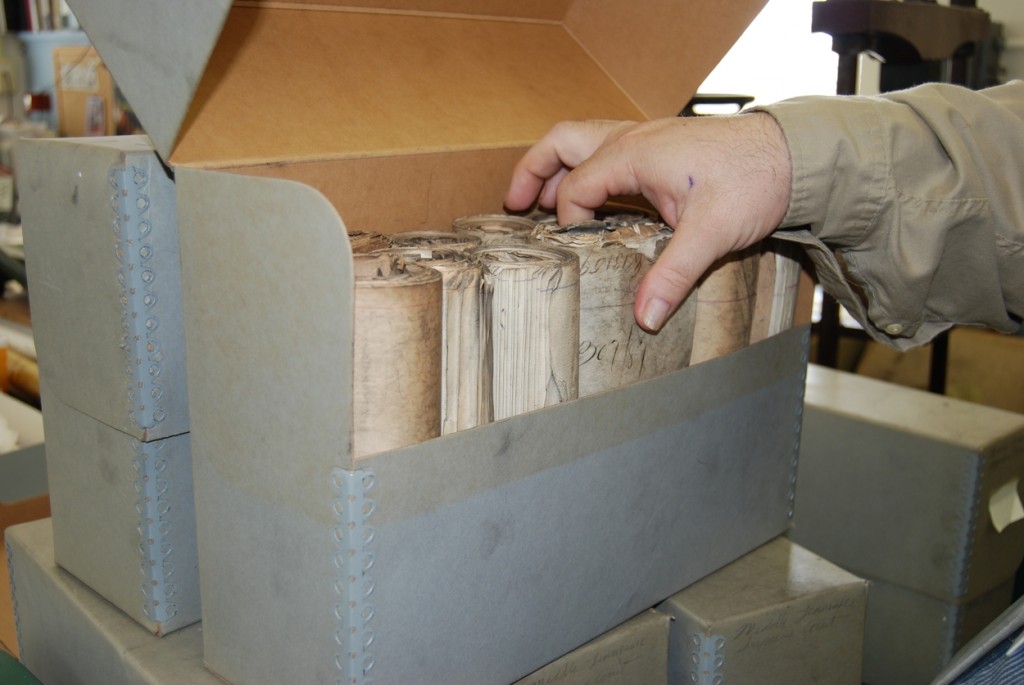

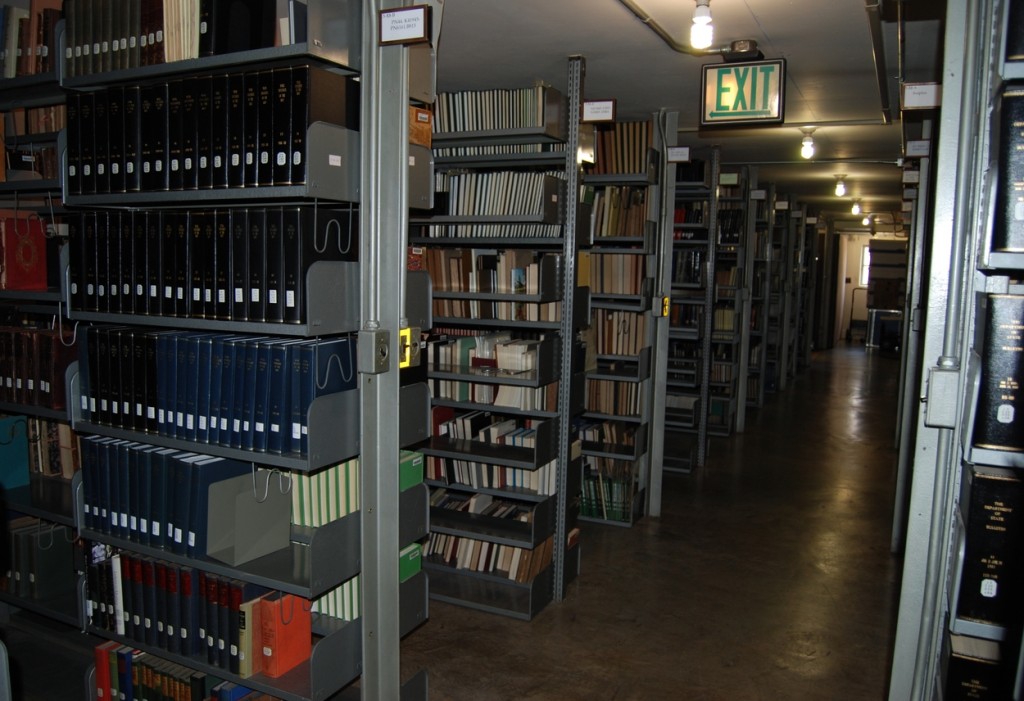
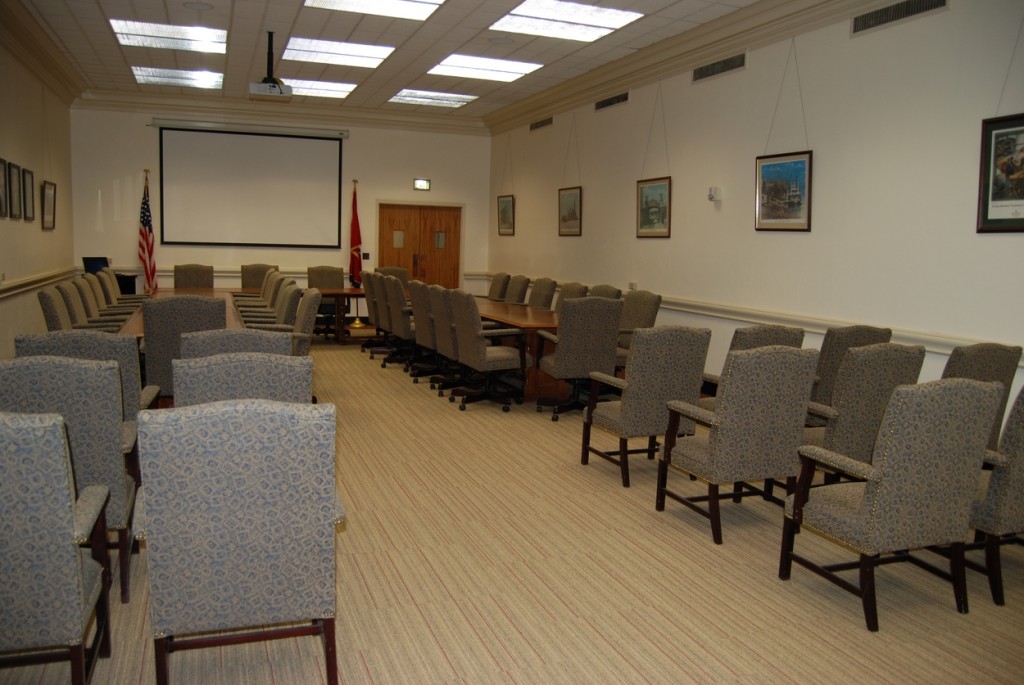

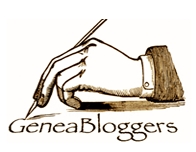
4 Responses to Field Trip: Tennessee State Library and Archives